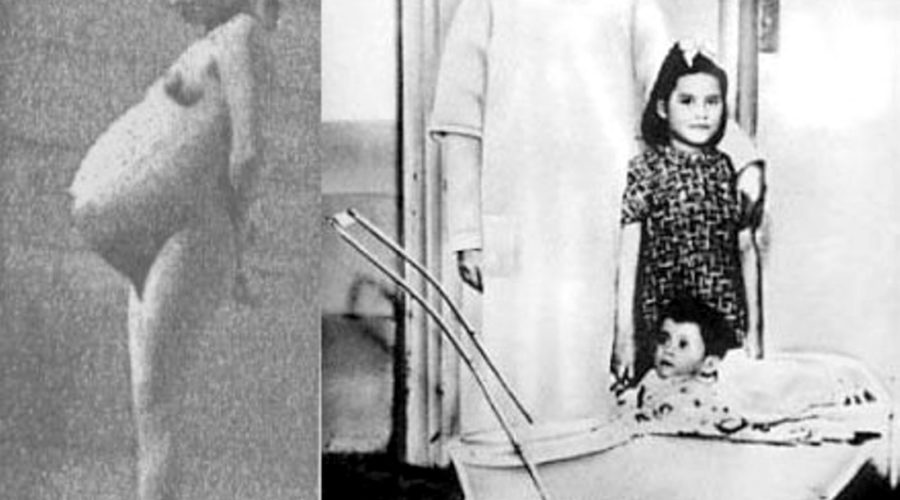Unveiling The Story Of The Youngest Mother In History
The term "youngest mother" evokes a range of emotions and discussions, often bringing to light the complexities surrounding teenage pregnancies. This phenomenon raises questions about societal norms, health implications, and the support systems available for young mothers. In a world where the average age of motherhood continues to rise, the story of the youngest mother serves as a striking contrast, inviting us to explore the circumstances that lead to such early motherhood.
As we delve deeper into the life of the youngest mother, we must consider the cultural, social, and economic factors that play a role in teenage pregnancies. The societal stigma surrounding young mothers often overshadows their personal stories, which can include resilience, determination, and the desire to provide for their children despite the odds stacked against them. This article aims to shed light on the life of the youngest mother, examining not just her unique situation but also the broader implications of her story.
Furthermore, understanding the journey of the youngest mother requires a careful examination of the challenges she faces. From health risks associated with early pregnancies to the emotional toll of raising a child at such a young age, the path is fraught with difficulties. Yet, it is also a story of hope, demonstrating that with the right support and resources, young mothers can thrive and build a future for themselves and their children.
Who is the Youngest Mother in Recorded History?
The title of the youngest mother in recorded history is held by Lina Medina, who gave birth at the tender age of just five years and seven months. Born on September 27, 1933, in Peru, Lina's story is both remarkable and disturbing, raising numerous ethical and social questions about childhood, consent, and the responsibilities of society in protecting its most vulnerable members.
What Circumstances Led to Lina Medina's Pregnancy?
Lina's pregnancy was the result of a rare medical condition known as precocious puberty, which caused her body to mature at an alarming rate. Her case was discovered when her parents took her to a hospital due to abdominal pain. After a series of examinations, doctors confirmed that she was pregnant, a revelation that shocked the medical community and the world at large.
How Did the Birth Impact Lina’s Life?
The birth of Lina's son, whom she named Gerardo, altered her life in profound ways. Despite the extraordinary circumstances, Lina's family chose to support her and raise Gerardo as their own. Lina became a symbol of the challenges faced by young mothers, navigating her adolescence while also assuming the responsibilities of motherhood.
What Are the Health Risks for Young Mothers?
Young mothers like Lina Medina often face significant health risks during pregnancy and childbirth. Some of the most common risks include:
- Higher likelihood of complications during pregnancy, including preterm birth and low birth weight.
- Increased chance of eclampsia and gestational hypertension.
- Emotional and psychological challenges, including postpartum depression.
- Social stigma and lack of support, leading to isolation and stress.
What Support Systems Are Available for Young Mothers?
Support systems for young mothers vary widely across different regions and cultures. Some of the essential resources include:
- Access to healthcare and maternal support programs.
- Education and vocational training to help young mothers build a sustainable future.
- Community support groups that provide emotional and practical assistance.
- Government initiatives aimed at reducing teenage pregnancies and supporting young families.
How Can Society Better Support Young Mothers?
To create a more supportive environment for young mothers, society must:
- Raise awareness about the challenges faced by young mothers and promote empathy and understanding.
- Implement comprehensive sex education programs to prevent unintended pregnancies.
- Provide resources that empower young mothers to pursue education and career opportunities.
- Encourage open dialogue about teenage pregnancy to reduce stigma and promote acceptance.
Biography of Lina Medina
| Detail | Information |
|---|---|
| Name | Lina Medina |
| Date of Birth | September 27, 1933 |
| Place of Birth | Peru |
| Age at Birth | 5 years, 7 months |
| Child's Name | Gerardo Medina |
| Current Status | Living (as of the latest update) |
What Does Lina’s Story Teach Us About Early Motherhood?
Lina Medina's story is a powerful reminder of the complexities surrounding early motherhood. It challenges us to consider not only the circumstances that lead to such situations but also the societal responsibilities we bear in supporting young mothers. By understanding Lina's journey, we can foster a more compassionate and informed approach to addressing the needs of young mothers everywhere.
How Can We Change the Narrative Around Young Mothers?
To change the narrative around young mothers, we must:
- Highlight stories of resilience and strength among young mothers.
- Advocate for policies that support young families and reduce stigma.
- Encourage community engagement and support for young mothers.
- Empower young mothers through education and resources.
In conclusion, the story of the youngest mother, Lina Medina, serves as both a cautionary tale and an inspiration. It reminds us of the importance of understanding the social, emotional, and health-related challenges faced by young mothers. By raising awareness and promoting support, we can help create a more nurturing environment for young mothers and their children, ensuring that they have the opportunities they need to thrive.
Exploring The Journey Of María Elvira Murillo Now
Sofia Crnilovic Fan Fix: Unveiling The Fascination Behind The Stardom
Karely Ruiz Age: Unveiling The Rising Star



ncG1vNJzZmiqn5i4o77InZ6emqKqtq%2B%2FjaipoGekp66nssicmqiml5rAtbXOp5yaq5WofLq71KeenqukYrqwwMeeqWegpKK5